hey friend!
I'm Martina.
I provide practical, time-saving strategies that actually work—so you can engage your students, teach effectively, and reclaim your time from the exhausting planning-grading cycle.
Browse Our ELA Resources
Teaching WITH Novels All Year Long: The Fifth Grade Literature and Informational Standards
Teach the Fifth Grade Reading Literature and Informational CCSS Standards with Actual Novels
I first wrote this blog post when I was heading into my second year of teaching fifth grade and so much has changed and been updated since then. This post will reflect all those changes.
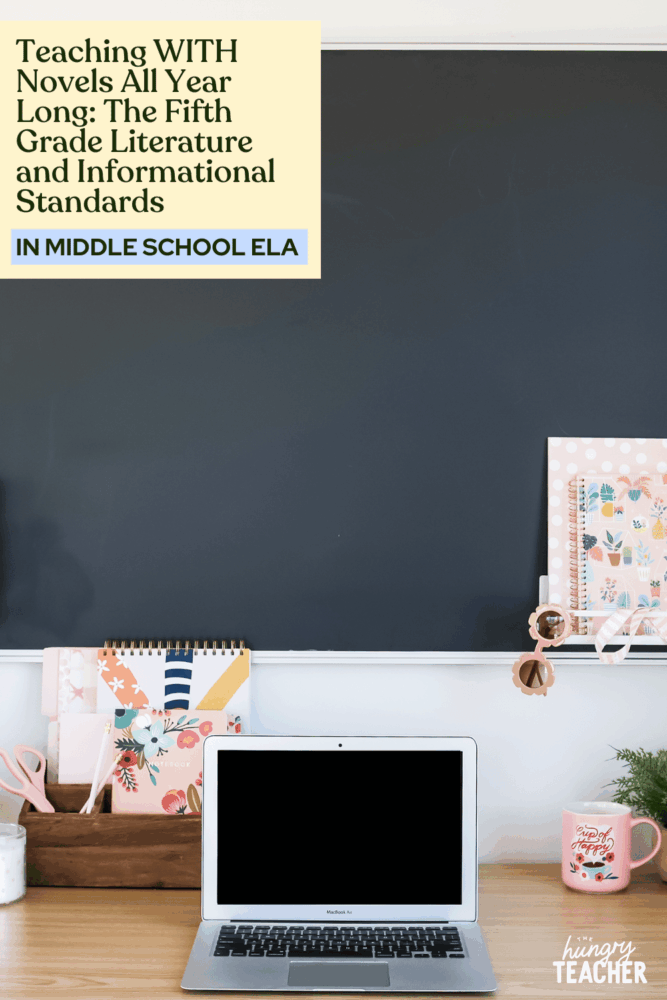
How Do These Reading Units Stay True to My Values?
- I believe in teaching kids, NOT BOOKS. I use the books to teach the kids. Always. That’s really important to note if you are going to teach with my reading units. I am not creating novel studies. These are truly reading units.
- My whole approach here is that I teach the standards, so I want to teach the standards with novels that I know my students will love. I want them to read as many books as humanly possible in the school year. I want them to go home and tell their parents about the books we are reading, and also about the books they are reading themselves.
- I want them to love reading, and leave my classroom as readers, not as fifth graders who can read.
- The goal is reading. The goal is discussions and excitement and kids who can’t wait for the next book. The goal and the core values are helping kids become life long reader
What does it look like in the classroom?
- Daily 5: When I taught 5th, my students still did Daily 5 (kind of). We had two rounds that were 20-25 minutes each where they get their choice. The only thing they are allowed to do both rounds is read-to-self, because I believe it will never hurt them to read for 40-50 minutes a day.
- I used Daily 5 because I wanted a system that allowed my readers to read, and then allowed me a structure to help “not-yet readers” find their love of reading.
- During these rounds I am constantly giving stacks of books to my “not-yet readers” (inspired by Donalyn Miller), encouraging students to form their own book clubs (with whatever books they want), working to build my community of wild readers, and sometimes, just reading myself.
- For our lessons, we read the reading unit book together, have a discussion (much like a large book club), and write our reading responses.
- I felt my students were 100% ready for testing, but I never had to do test prep or stray away from what I believed in, because we were doing authentic reading, discussing, and writing every single day. And we still had 40-50 minutes of choice.
- More than anything, my readers and “not-yet readers” were all exposed, and fell in love with all the books we read together. I selected tried and true books from all different genres. I picked books I loved so they could see how excited I was to read each and every single book, because I actually was. It encouraged them to try different books, form new book clubs, and some of my “not-yet readers” became readers…Mission accomplished.
How are these units different?
- You and your students will read and discuss 6-10 different novels from all different genres in one school year.
- You start the year wit the literature unit with interactive notebook lessons so students have a strong foundation of literature terms like: theme, character traits, mood, tone, inferences, figurative language, etc.
- Imagine how much this does for vocabulary, how much it develops a love of reading, and how much it can positively affect your classroom community. It also exposes them to books and genres that they might not have read on their own otherwise.
- Your entire 5th grade reading curriculum is done for you.
- You are digging deep into EVERY SINGLE reading and writing standard EVERY SINGLE week.
- The flexibility to choose the novels you want to teach with. You and your students will NEVER be bored with all the different novels choices
- You are teaching with ACTUAL NOVELS. Again though, the focus isn’t teaching the novels themselves. The focus is using the novels to teach the Kids.

What is the foundation of these units?
- During my second year of teaching 5th grade, I had an absolutely wonderful teaching partner who introduced me to The Literacy Studio, and I have created resources, not products, that I 100% believe in.
- I have never believed in anything more than I do using novels in the Literacy Studio with Socratic Seminars.
What is the Daily Class Schedule Like?
This is a common question because everyone has a different schedule and a different amount of time. This was my daily schedule and then my reading block broken down.
We did have a longer day, but we did not have school on Fridays.
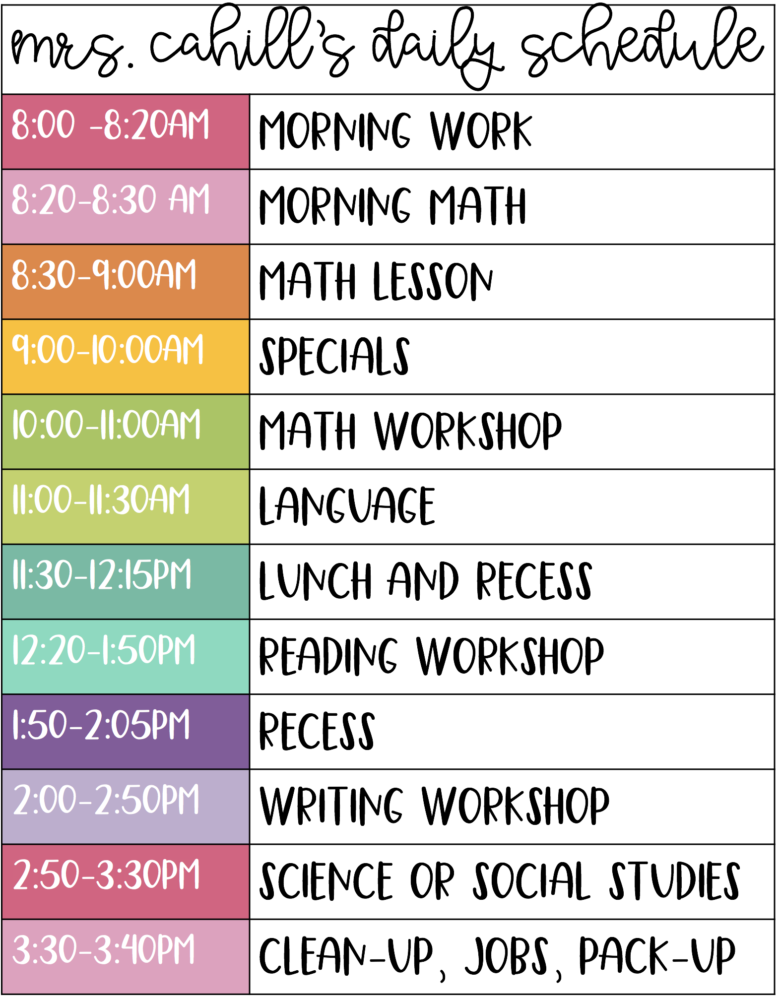
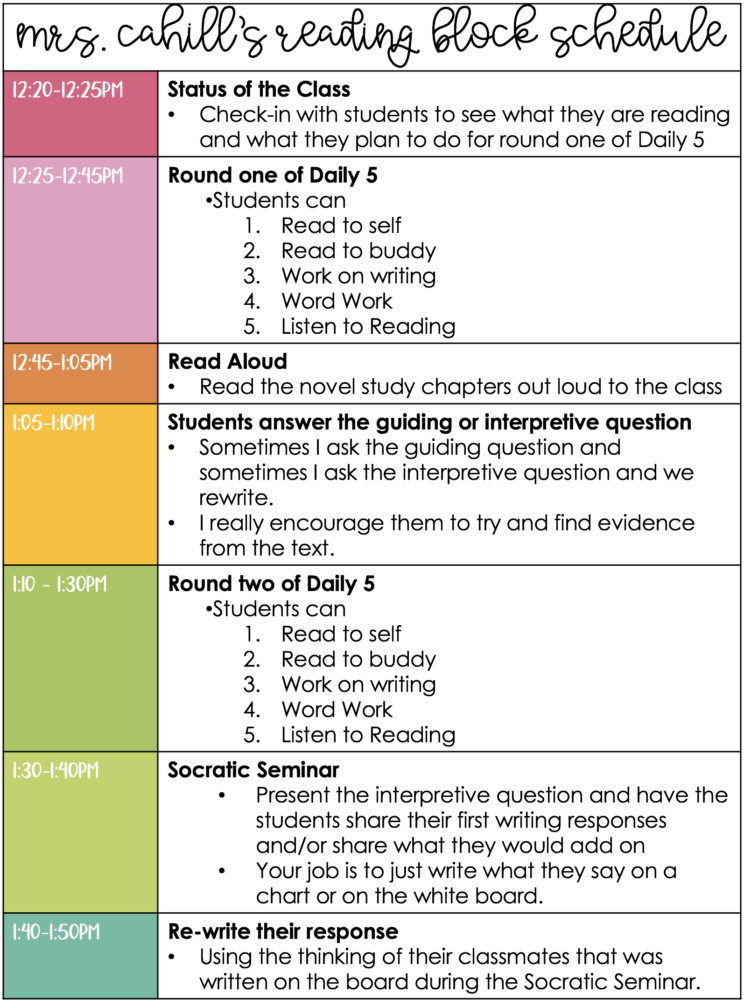
What Does a Daily Lesson Plan Look Like?
Are There Assessments?
Another thing I get a lot of questions about is how I assess my students. Some things to remember:
- We are NOT teaching the novels. We are teaching the students. There are ABSOLUTELY NO summative assessments on the novels. I am not testing them on their abilities to remember what happened on page 58.
- We are assessing students on their conceptual knowledge and understanding of the standards.
- The goal is to assess students on their growth as critical thinkers and writers.
- In order to do this, I use rubrics. Each unit contains 8 different rubrics, but in full disclosure here, I mostly use the first one which assesses them on a mix of literature or non-fiction, writing, and language standards.
- I collect their notebooks every week or every other week and then use the rubrics to assess all 5-8 responses they have done int that timeframe.
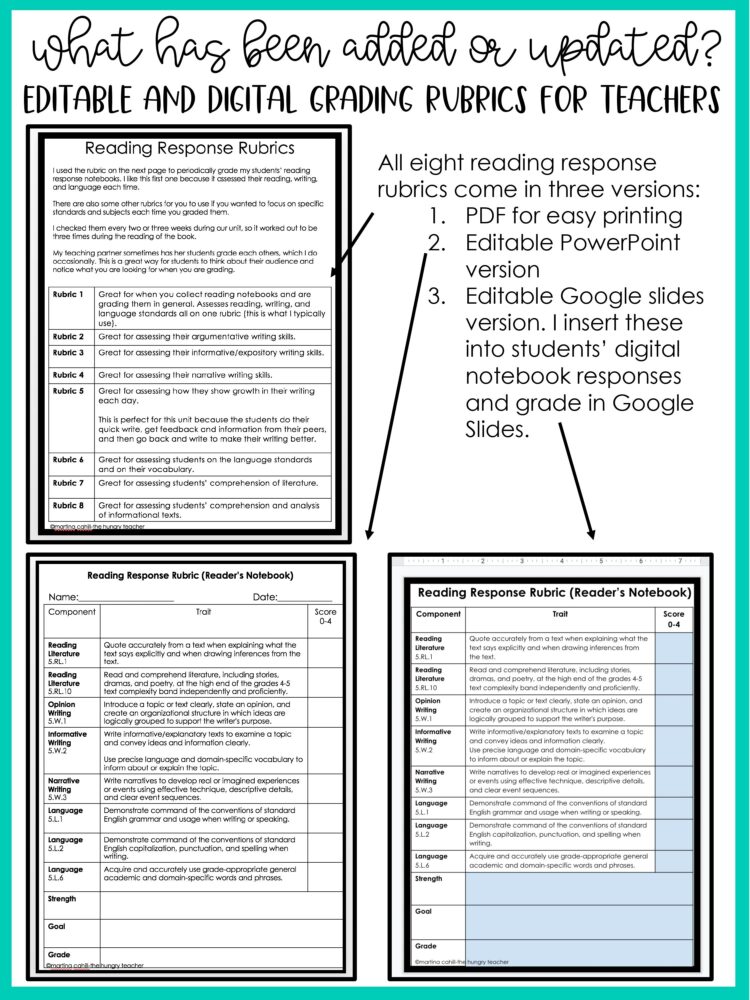
Reading Responses
I have taught so many novels over the years and have so many reading responses from students, but I have taken pictures over the years. I don’t have pictures for every novel, but I did take pictures of responses that students wrote that are good examples.
These resources have gotten HUGE updates (August 2020) since creation in 2015:
- Digital Interactive Google Slides Literature Notebooks Lessons
- Teacher suggested answers for comprehension questions
- Teacher suggested vocabulary words and definitions
- PowerPoint and PDF Display slides for all Guiding and Interpretive Questions (JPEG images included to upload to Google Slides as well)
- Digital Student Reading Response Notebooks
- Editable PowerPoint Reading Response Rubrics
- Editable Google Slides Reading Response Rubrics
- Small group and individual conference teacher forms
- Lesson plans and the Common Core standard alignments are their own file now so teachers can easily and quickly access the novel lessons.
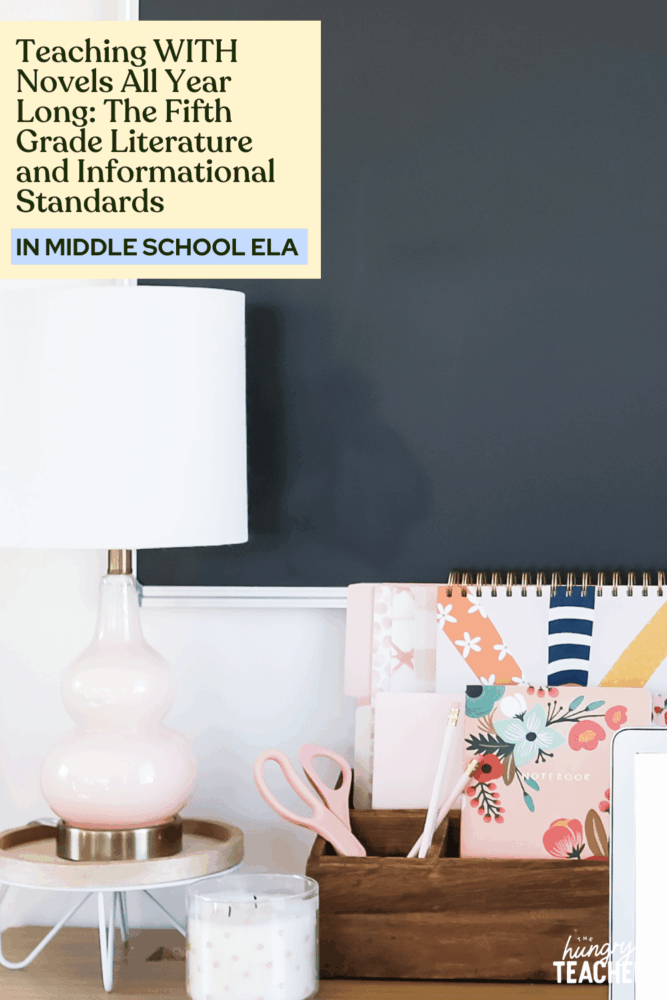
What Are the Options for These Units?
You can always buy any of the reading units individually:
- Common Core Literature Interactive Notebook Unit (25 Lessons)
-
Freak the Mighty by Rodman Philbrick (13 lessons) Updated 2020
-
The Giver by Lois Lowry (12 lessons) Updated 2020
-
Harry Potter and the Sorcerer’s Stone (28 lessons) Updated 2020
-
Holes by Louis Sachar (21 lessons) Updated 2020
-
Number the Stars by Lois Lowry (13 lessons) Updated 2020
-
The Watsons Go to Birmingham- 1963 (18 lessons) Updated 2020
The Units Have Also Been Put Into a Variety of Bundles:
Want a sneak peek at teaching The Hungry Teacher way—with support, structure, and strategy?
When you join the waitlist for The Hungry Teacher’s Hub membership, you get three free classroom-ready resources: a theme unit, an expository writing unit, and a grammar unit introducing mentor sentences. Plus, you’ll get immediate access to a selection of exclusives from the Hub, including editable sub plans, pacing guides, and more.
No strings attached. Just resources you can use right now—and a heads-up when the Hub opens.
3 Free Middle School ELA Units—yours to keep!
JOIN THE WAITLIST + A FREE GIFT
Where to next, line leader?
Welcome to The Hungry Teacher! We create resources that are easy to use, practical, and get results. Teach with confidence—and make it home before dinner.
xo, the hungry teacher
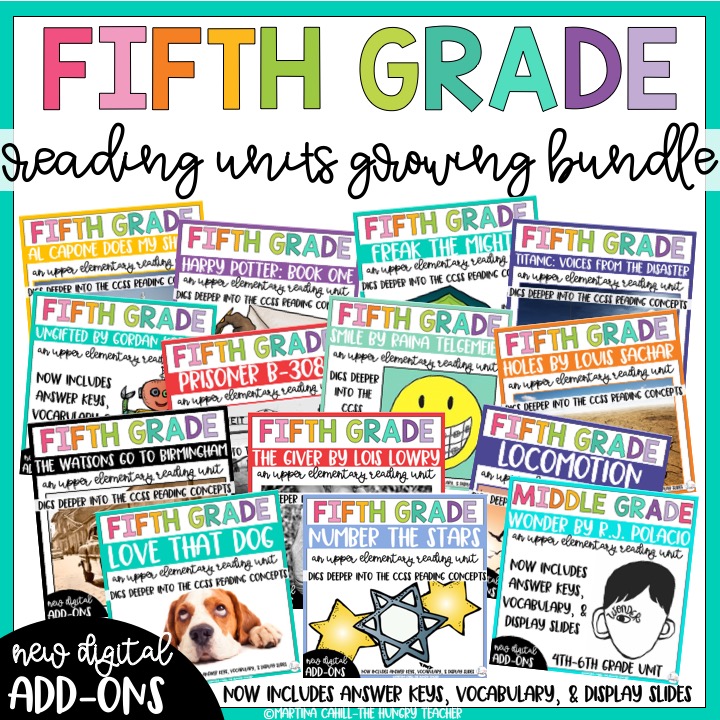
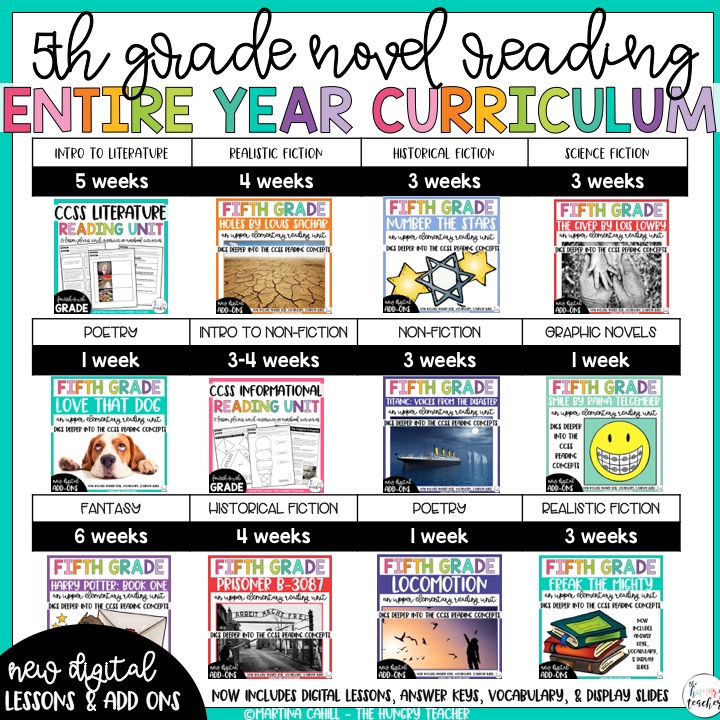
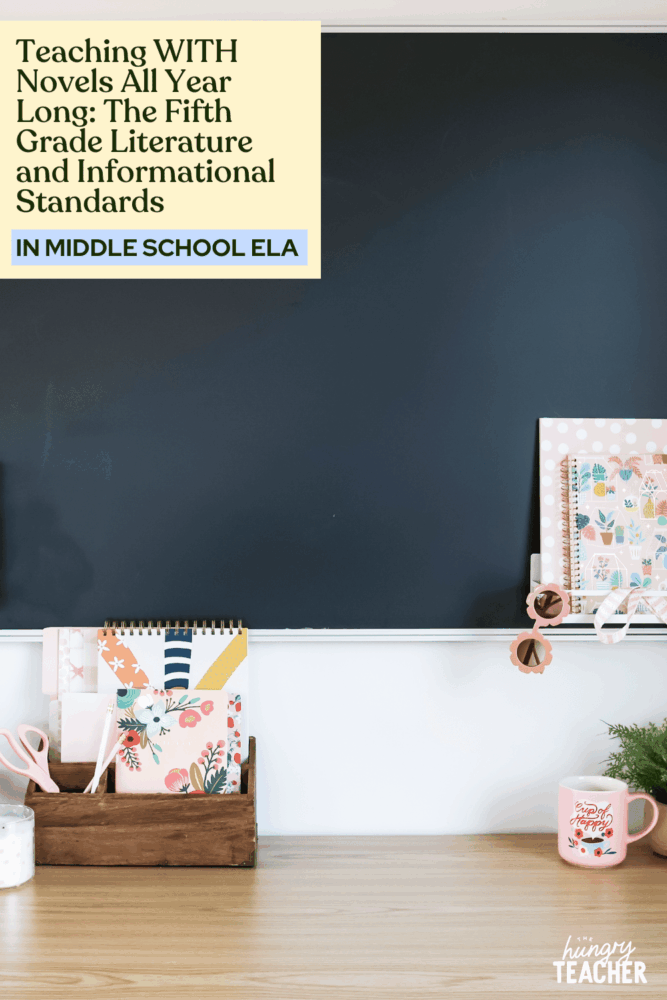
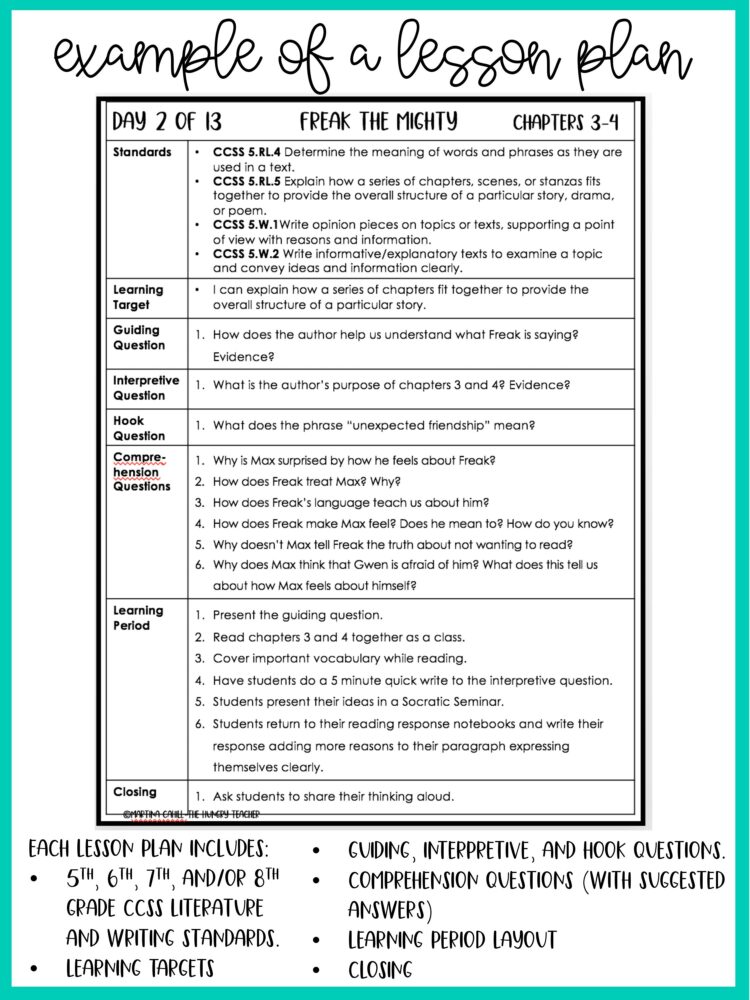
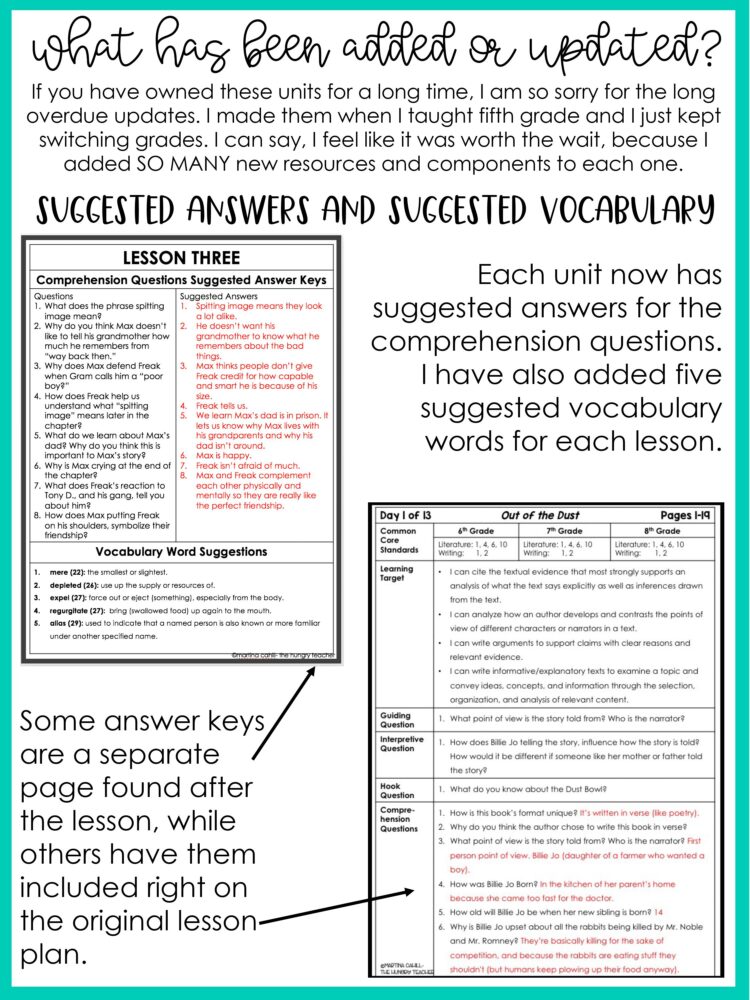
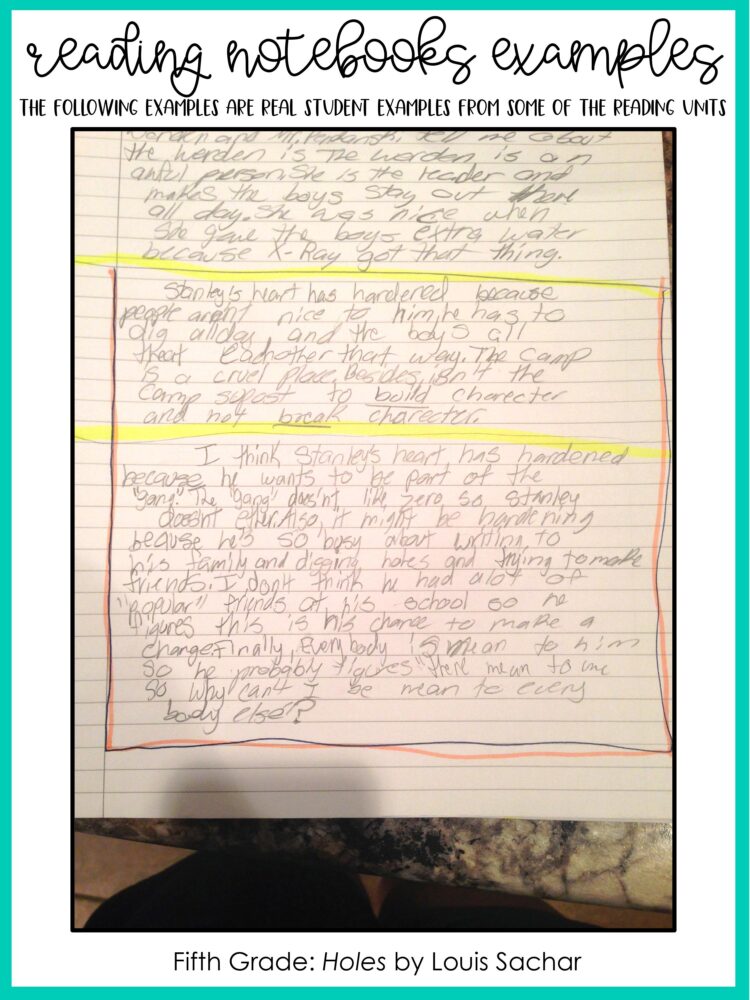
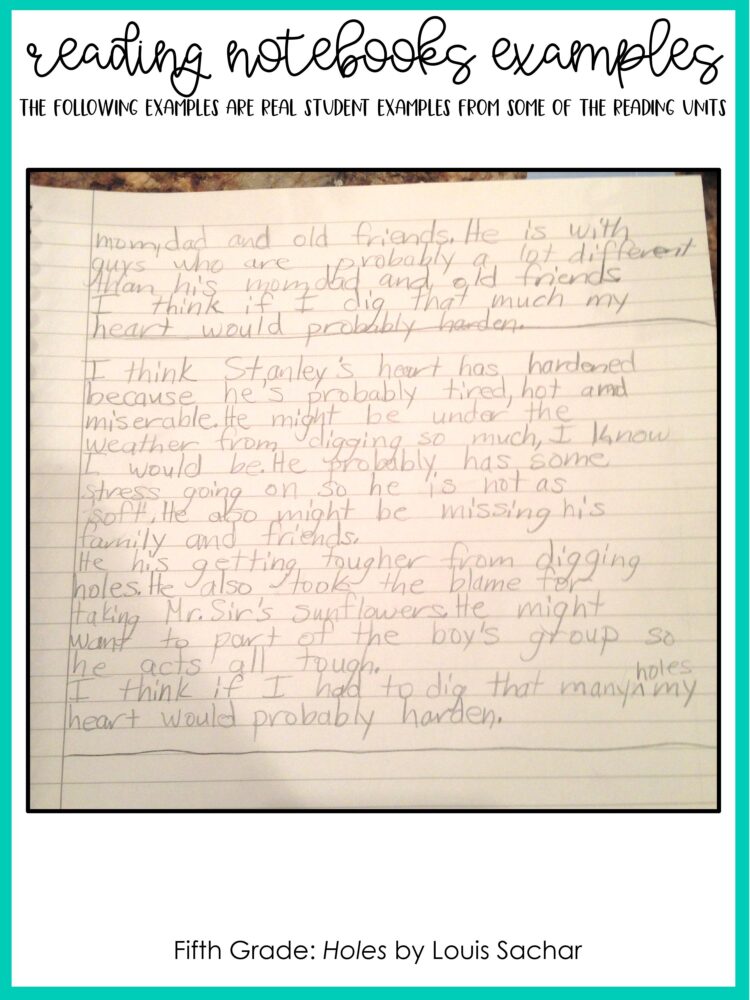
I am very intrigued. I've always wanted to teach reading this way, but I never knew how to make it work. I've never heard of the Literacy Studio and want to find out more. Do you have a suggested place for me to start reading about the Literacy STudio? I teach 4th grade and would love to try this out. Do all the children have a copy of the novel? (Sorry if you answered this in your post. I want to go back and read your post again more carefully). Thank you for sharing!!!
People always ask me about Literacy Studio, and I have honestly never really found any information in terms of professional development, even in the form of books. My old teaching partner was trained in it, and had all the resources. She showed me a lesson she had created and we just built it off of that. I formed my ideals and direction based on that. I have researched the Socratic Seminar simply by Googling :). In my class, all students do have a copy of the novels because I really want them to cite textual evidence, however, we have made do with 1/2 class sets. I honestly haven't done it as a read aloud type lesson, but I really do think it could work because it really forces them to think and have deep conversations. For fourth grade I would just make sure that by the end of the year, that they have at least one unit where they have their own books so they can get in the habit of citing textual evidence for fifth grade and middle school!
Hope that helps and thank you so much for your response.
Martina
I am really impressed with all the work you have put into these bundles. I am trying to decide which products to purchase. I teach ELA to 5th, 6th, 7th and 8th graders. I have each class for 90 minutes each day. Right now I am considering option 2 for 5th grade (to use with 5th and 6th graders) and then maybe buying individual reading units for 7th and 8th graders as needed. I have limited money and need to use it wisely. At the moment I have no classroom library. My plan is to borrow loads and loads of books from the local library. I am new to the area and still have not checked out our local library. I am hoping they have an incredible young adult inventory. Also, does each student have a copy of the read aloud novel? What if I use the 5th grade bundle with all grades this year and then for the next three years add a grade level until I have individual plans for each grade. Do you think the 5th grade titles are too young for 8th graders? Thanks!
Thank you so much! I think purchasing option 2 for 5th and 6th grade would work great! I would do the same thing in your situation. I am working on 7th and 8th grade specific units now. They will be posted as the year goes on (because I am teaching 7th and 8th grade ELA this year). I will be honest and say that some of the units aren't my favorite because they are "classics" that I am required to teach because of my curriculum. I will still post some of my favorites though that I plan to teach (Freak the Mighty, A Long Walk to Water, The Finest Hours, The Crossover, and Booked). That being said, I really think that all the units would work in grade 5-8. A few might be too young, but Freak the Mighty, Ungifted, Titanic, Prisoner B-3087, Al Capone, and The Giver are all books I would do in grades 5th-8th. If anything you might just purchase The Maze Runner and a Long Walk to Water (only 6th grade units) for your 7th and 8th graders just because they are a little more complex and aren't in the 5th grade bundle!
For the books, all of my students do have a copy of the read aloud novel. I highly recommend recomend that format so that they can cite textual evidence. It can work, but it honestly is just more difficult. I highly recommend Donor's choose to try to at least get one or two sets to start! That's how I've gotten almost all of my class sets! Hope that helps and than you so much for your response!
Martina!
Thanks so much, Martina! I definitely plan on using Donors Choose to get some novel sets. I think I have finally narrowed down what to buy to start off the year. I still have one question, do you have a pacing guide for 6th grade that lists the resources you use for grammar, writing etc. like you do for the other grades? Do you think I can use the writing units from Appleslices, that you recommend for 5th grade, with 6th graders or do you suggest something else?
Keep us posted on the 7/8 units. I did get a class set of Maze Runner so o can start with that this year. I'm going to share this with with my Language Arts CoTeacher (I'm Reading) when we start our planning brainstorming on Monday.
When will the 6th grade Curriculum be available? Is that the same thing as if I do option 2? I just got moved from 4th grade to 6th grade with no curriculum for 6th. Eek!
The curriculum is close, but yes, option 2 is basically the exact same thing (and kind of better in a way because you just pay for the units in the growing bundle now and get the new ones as I add them). You will hair purchase the bundle and the ccss units separately but the pacing guide is still in there. Also…. So jealous you don't have curriculum! People think I'm crazy but my dream job is 6th grade self-contains with no curriculum! You will love it! 6th is my favorite!
Thank you! Muah!
Martina
Thanks so much! I'm a kindergarten teacher who has a passion for 4th grade, so I'm mostly just drowning in thoughts of, "What the hell am I doing!" Hahahaha! Excited to give your novels a whirl.
I guess my answer to that would be yes and no. They are aligned to the 5th grade CCSS standards in the units. That being said, when I have adapted some of my units from 5th to 6th (Freak the Mighty, Harry Potter, Ungifted) They are probably 80-90% the same. I just go through and make some of the interpretive and guiding questions different to fit RL.3 a little better. So you could essentially take the unit and where is says 5.RL.1 you are still really teaching 6.RL.1. If it was me, I would do it, and feel confident that I am still teaching the 6th grade CCSS. Hope that helps!
Thanks again!
Martina
LOVE LOVE LOVE all your hard work on sharing your curriculum, pacing guides, and how you put it all into place. My school has the teachers split up their ELA (one teacher does reading/vocab and the other does writing/grammar). I will obvious collaborate alot with the other teacher to work on this together, but what are some of your ideas for how to split this up effectively. I would be doing the writing/grammar aspect.
Thank you so much! It would require some collaboration, but there are a couple ways you could do this. First would be to have the reading/vocabulary teacher to do the reading of the novels and then vocabulary piece in her class. Essentially she would read and have the kids find vocab words, define them using context clues, and then discuss as a class. For your portion I would have them answer the guiding question, do the Socratic Seminar, and then answer the interpretive question as a class (this could all be done in 20-25 minutes in your class). For grammar, I honestly use Lovin Lit's interactive grammar notebook, so that's where the rest of the time could go.
If you can't work this out with your teaching partner, I honestly think the other option would be to do the lessons just as I do them, where you read, answer the guiding questions, do the Socratic Seminar, and then answer the interpretive. Honestly, I have found that this method helps my students writing abilities more so than their reading because they have to write SO much.
Hope that helps!
Thanks again!
Martina
I LOVE this so much. I'm moving from 5th to 6th and will have the flexibility to teach through novels (yes!!). I have class sets of many of these books already (double yes!) but some are in the 5th curriculum (Holes, Number the Stars, Watsons) and I have Freak the Mighty (in both curriculum of course). Would you recommend purchasing the 6th bundle and also buying the individual 5th novel studies for the class sets I already have? That way, I could use those units as needed. Or do you think the 5th units will be too young for 6th? I appreciate your thoughts and advice on this!
Hi! Thank you so much! I went from 5th to 6th last year too! If I could have stayed in 6th grade self-contained forever I would have! LOVED 6th! I think either way would work. Honestly, I just tried to pick some different novels so teachers didn't have to repeat. I would totally teach Holes, Number the Stars, and Watsons in 6th and I will teach Freak the Mighty no matter what grade I teach ha! Honestly, based on the novels you have, it sounds like the 5th grade bundle will be your best bang for your buck and then purchase 6th individual ones (if you even need to). They are not too young at all. In fact, sometimes I think I push the limits of them being too old for 5th (but I don't care ha!). The only BIG difference I noticed from 5th to 6th was that 6th was supposed to focus on plot development more and they were supposed to cite the best evidence instead of just any evidence. Other than that, that standards are VERY similar.
Hope that helps!
Thanks again!
Martina
Ok, another question! Ha! Some of your 5th grade books are the "traditional" 6th grade novels at my new school. Would they cover 6th grade CCS or not so much?
Very helpful, thank you!! Can't wait to implement!
Thank you so much!
Martina
I just purchased your fifth grade growing bundle and I'm so excited to use it this year! I am going into my fifth year teaching, but this is my first year in self contained. In the past I only taught math. I have read through a few of the units and it sounds like you teach vocabulary by stopping and discussing words as you go. Do you teach vocabulary outside of the units? i.e. vocab tests, etc.
Hi! Thank you so much! I am so excited for you too! I love teaching with novels! So, my vocabulary instruction has really evolved over the last 2-3 years. When I was self-contained 5th, I had a separate 25-30 minute language block every day where I did Spelling and Vocabulary on an alternating schedule. I used Words Their Way for spelling and I used Chalk and Apple's Root Word Morphology program (on TPT). Last year, I didn't have as much time, so I did vocabulary instruction through my novels and through my short stories in my curriculum, and also through my bell ringers. My Bell ringers teach them a root a week and a word a week… No assessment really… They just had to figure out the meanings and we had discussions. For the novels, I used a 4-square planner model. I posted pictures at the bottom of the post (just for you and kind of randomly at the bottom 🙂 so you can see). Sometimes I would pick the words, or sometimes I would tell them to be on the lookout for 4 words. They were NOT allowed to use a dictionary because I wanted them to use context clues! Hope that helps!
Thanks,
Martina